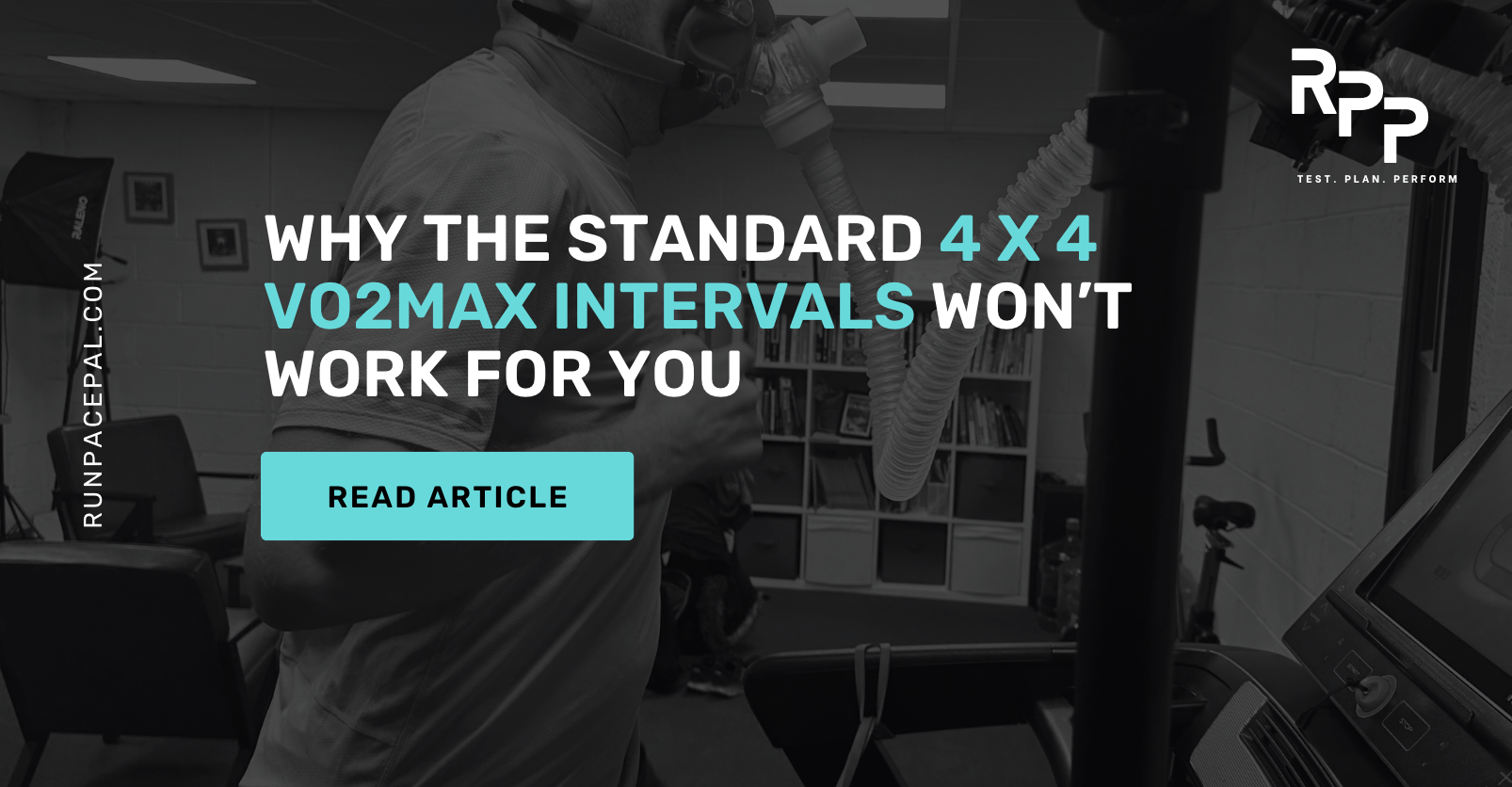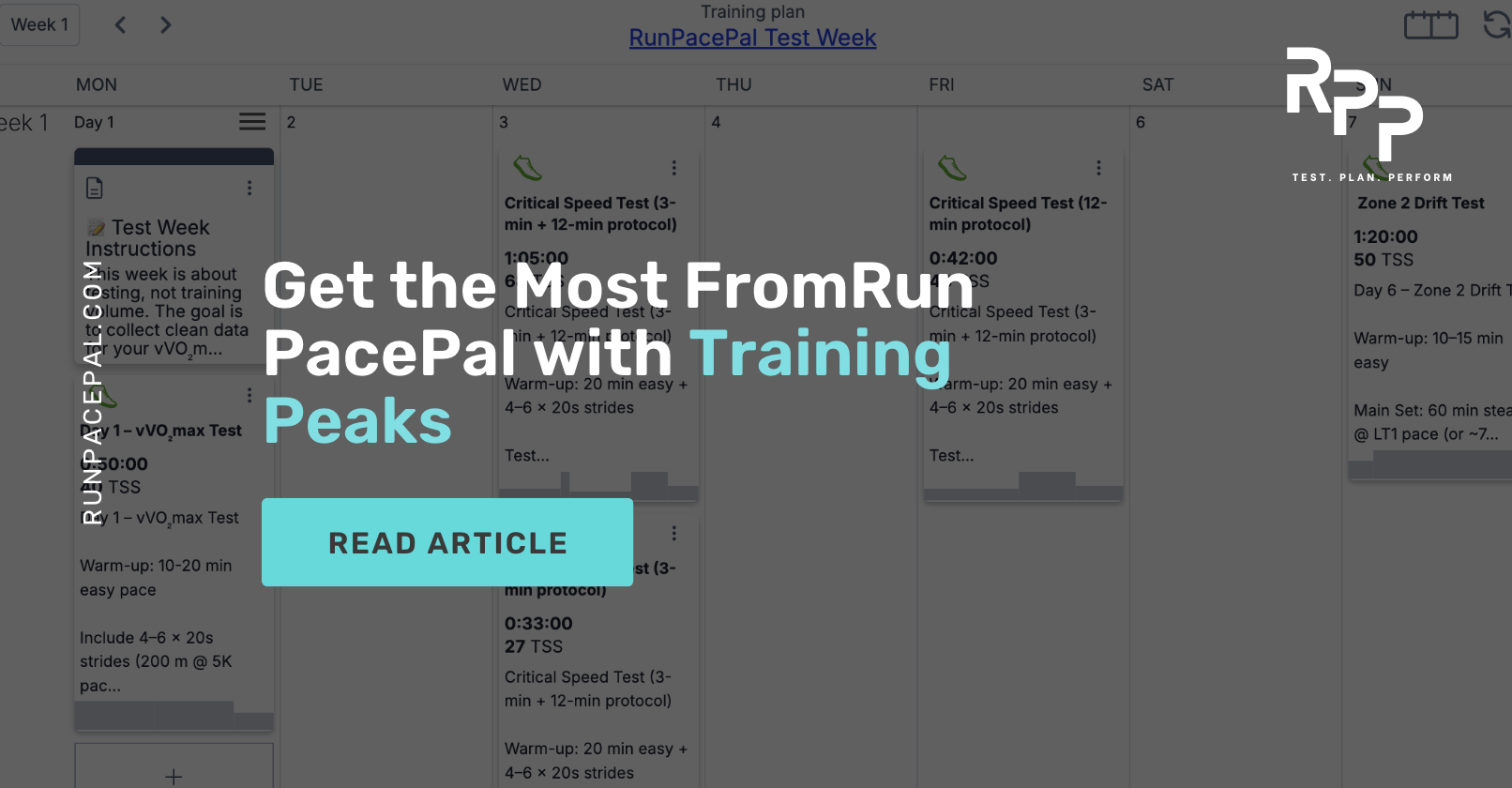Why Personalised Training Data Beats Every Generic Running Plan
Most runners train using guesswork — pace charts, percentage-based heart rate zones, or copy-paste marathon plans. The problem? These methods assume everyone's physiology is the same.
But research consistently shows that your thresholds, your VO₂max, and your efficiency are unique. That's why some athletes thrive on generic plans while others burn out.
The solution is personalisation based on science — using metrics like VO₂max, Critical Speed, D′, and aerobic efficiency.
The Problem With Generic Plans
Fixed Paces
One runner's "tempo" is another's all-out effort. Generic pace charts based on race times ignore individual physiological differences.
Assumed HR Zones
Formulas like 220-age are notoriously inaccurate, often off by 10–20 bpm. Your true maximum heart rate could be 185 or 215 — that's a massive difference for zone prescription.
No Adaptation
Plans don't evolve when your fitness changes. A static 16-week plan can't account for rapid improvements or unexpected setbacks.
No Accounting for Anaerobic Reserve (D′)
Two athletes with the same threshold pace may last totally different lengths of time above it. One might sustain 105% threshold for 8 minutes, another for only 3 minutes.
Evidence: Meixner et al. (2025) showed that Zone 2 intensity varies hugely between athletes, meaning universal prescriptions often misplace the true aerobic threshold. Generic %HRmax targets simply don't work for everyone (PMC11986187).
The Science That Makes Training Personal
VO₂max & vVO₂max
VO₂max = the size of your aerobic engine
vVO₂max = the running speed that taxes that engine
Billat et al. demonstrated that running to exhaustion near VO₂max pace reliably predicts Critical Speed and threshold capabilities in trained runners (PubMed 9338084).
Critical Speed & D′
Critical Speed = the pace you can hold without rapid fatigue
D′ = your finite "anaerobic battery"
Nixon et al. (2021) confirmed that Critical Speed aligns closely with the maximal lactate steady state (MLSS), making it a highly valid threshold marker (PMC8505327).
Efficiency (HR Drift)
HR drift (cardiac drift) shows whether your easy pace is truly aerobic. Over weeks, reductions in HR drift = improved efficiency and durability.
Interval Design
Dupont et al. (2002) showed that intermittent runs at 110–120% MAS keep athletes at high VO₂ values longer than continuous runs — the basis of VO₂max protocols like Billat 30/30s (PubMed 12179954).
How Run Pace Pal Applies the Science
Instead of guessing, Run Pace Pal turns your physiology into actionable training:
- Free calculators for VO₂max, Critical Speed, and Zone 2 drift
- Premium features build personalised VO₂max intervals, threshold sessions, tempos, and base programs
- Your results and workouts adapt as you retest — no more plateaus
Real-World Example
Generic Plan: "Run 5 x 1000m at 5K pace with 90s recovery"
Personalised Approach: "Run 5 x 1000m at 102% Critical Speed (4:15/km for you) with 90s recovery, targeting 85-90% max HR"
The difference? The second prescription accounts for YOUR physiology, not population averages.
The Personalisation Process
Step 1: Establish Your Baseline
- VO₂max test: 6-minute maximal effort protocol
- Critical Speed test: Multiple time trials (3, 6, 12 minutes)
- Zone 2 drift test: 60-minute HR drift assessment
Step 2: Calculate Training Zones
- Zone 1: <75% Critical Speed (active recovery)
- Zone 2: 75-85% Critical Speed (aerobic base)
- Tempo: 85-95% Critical Speed (aerobic development)
- Threshold: 95-105% Critical Speed (lactate steady state)
- VO₂max: 105-110% Critical Speed (aerobic power)
Step 3: Design Workouts
Using your personal zones, create: - Aerobic base sessions that truly stay aerobic - Threshold intervals that target your exact lactate steady state - VO₂max sessions that optimize time at maximum oxygen uptake
Step 4: Monitor and Adapt
- Retest every 4-6 weeks to track improvements
- Adjust zones based on new data
- Modify training load based on HR drift trends
Where Lab Testing Fits In
Field-based tests cover most of what you need. But if you want to validate your numbers with gold-standard precision, professional testing offers:
Advanced Physiological Insights
- VO₂max mask testing → direct oxygen measurement
- Lactate profiling → pinpoints LT1 and LT2 thresholds
- Running economy analysis → efficiency at different speeds
- Metabolic consultancy → expert analysis and tailored training plans
👉 Book professional testing: boxnutrition.co.uk/book-online
Case Study: Generic vs. Personalised
Athlete Profile
- Age: 35, experienced runner
- 5K PB: 18:30
- Generic plan prescription: Train at 4:00/km for tempo runs
Generic Approach Issues
- 220-age formula: Predicted max HR of 185 bpm
- Tempo pace: 4:00/km based on race calculator
- Result: Athlete consistently exceeded lactate threshold, accumulated excessive fatigue
Personalised Approach
- Actual max HR: 198 bpm (13 bpm higher than predicted)
- Critical Speed test: 4:10/km sustainable pace
- Personalised tempo: 4:20/km (95% Critical Speed)
- Result: Improved aerobic capacity, reduced injury risk, faster race times
Key Takeaways
Generic Plans Are Blind
They ignore your unique physiology and assume population averages apply to you.
Science-Based Personalisation Uses:
- VO₂max → your aerobic ceiling
- Critical Speed & D′ → your red line and anaerobic reserve
- Efficiency (HR drift) → your long-term durability
The Tools You Need
- Run Pace Pal applies these principles with free testing and premium training features
- Professional lab testing validates results with gold-standard precision
Ready to Personalize Your Training?
Stop guessing. Start training with precision.
Our free calculators give you laboratory-grade physiological insights in minutes, not months. Get your personal training zones, workout prescriptions, and efficiency markers — all based on YOUR unique physiology.
No generic formulas. No population averages. Just precise, actionable data.
For the ultimate validation of your training zones, professional lactate and VO₂max testing provides even deeper insights into your metabolic profile and running economy.



